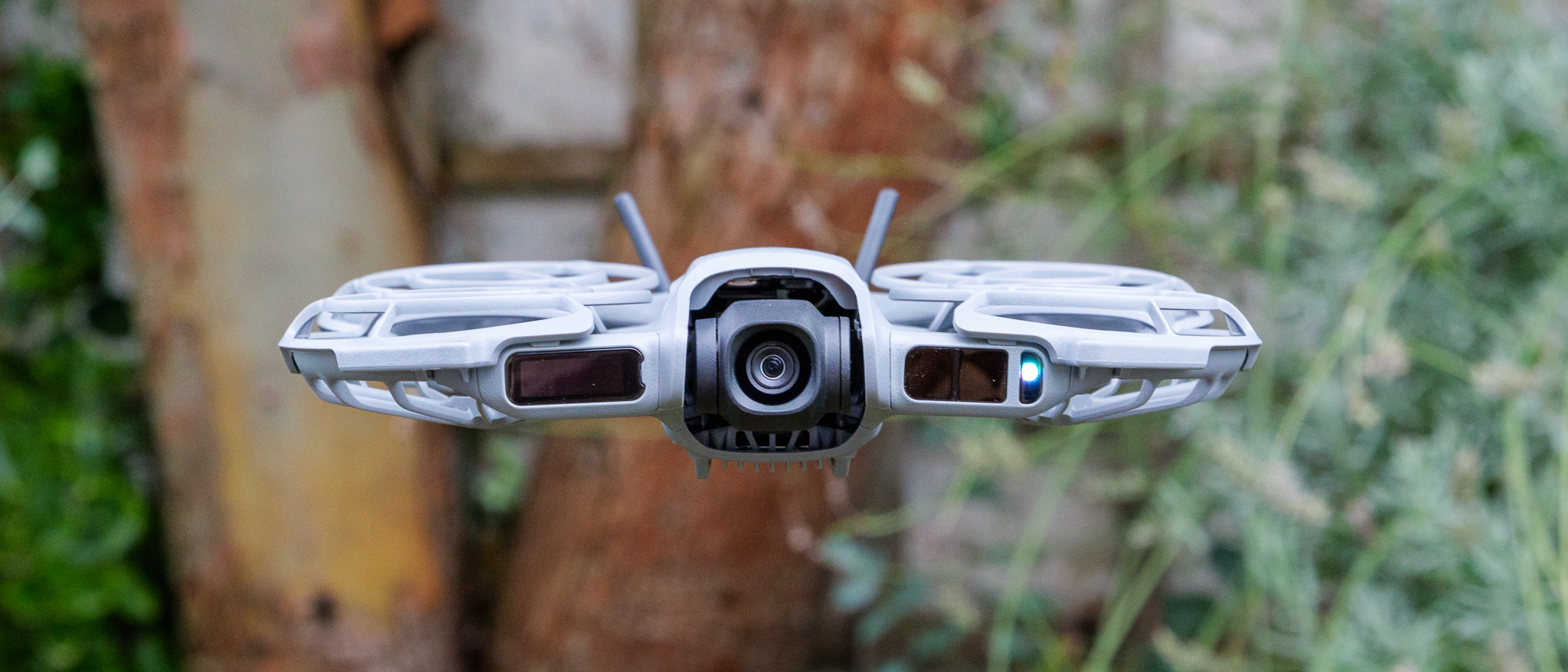TechRadar Verdict
The Neo 2 takes the template laid down by 2024's Neo and refines it. The image quality is improved slightly thanks to faster frame rates and a new gimbal, and storage space is more than doubled, but the best new feature for me is omnidirectional obstacle avoidance, which makes the chances of losing the Neo 2 to an accidental crash so much smaller. The price has risen slightly, but given the improvements, I think this is still a bargain of a beginner drone.
Pros
- +
Now has obstacle avoidance
- +
Improved camera performance
- +
More storage and faster transfer speed
Cons
- -
Still only shoots JPEG photos
- -
Limited battery life
Why you can trust TechRadar
DJI Neo 2: one-minute review
The DJI Neo was a cheap beginner drone that represented a push in a new direction for the brand: it was designed primarily for shooting very short clips and photos for social media, and its size and simplicity (it could be flown without a controller) made it a carry-anywhere device.
A year on, the DJI Neo 2 is here, and I'm happy to report that it retains the core appeal of the original model – affordable, simple and small – while also packing some meaningful improvements.

For me, the headline upgrade is the addition of an omnidirectional obstacle avoidance system. One of the Neo's weaknesses was a tendency to crash, particularly when you were using one of its automated flight modes, but the new setup, with combined vision and LiDAR sensors, makes collisions a lot less likely.
The camera has also been improved, with better image stabilization thanks to a new two-axis gimbal, higher frame-rate options for 4K video, and slightly improved sensitivity. And there's now almost 50GB of onboard storage, up from 22GB on the original model.
For automated flight modes I liked the new onboard screen, which is much more informative and useful than the icon-based indicators on the Neo.
Aside from these tweaks, things are much the same as on the Neo, for better or worse. Flight time is still a little on the short side, so investing in multiple batteries is recommended, while on the control front, the option to supplement autonomous flight with manual control from a smartphone running the DJI Fly app or a full-blooded twin-stick controller makes the Neo 2 far more than a simple selfie drone.
DJI Neo 2: release date and price
- Released November 13 2025
- Base kit costs £209 / AU$409, Fly More Bundle costs £349 / AU$709
- Not officially available in US
DJI announced the Neo 2 on November 13 2025, a little over a year after the launch of the original Neo. It's available to order immediately in most of the world, in the following options:
DJI Neo 2 (drone only) from £209 / AU$409; DJI Neo 2 Fly More Combo, which includes the drone plus three batteries and a charging hub, from £289 / AU$549; DJI Neo 2 Fly More Combo, which includes the above plus an RC-N3 controller, from £349 / AU$709; and DJI Neo 2 Motion Fly More Combo, which includes the batteries and hub plus a motion controller and FPV headset.
Sign up for breaking news, reviews, opinion, top tech deals, and more.
When the original Neo arrived last year, it was priced from £169 / AU$299, so the Neo 2 is a slightly pricier prospect. However, given its extra features and functionality, I think the extra cost is justified, and it's still one of the cheapest non-toy drones on the market.
As with all recent DJI products, the Neo 2 is not coming to the US market. DJI has released the following statement: "The DJI Neo 2 will not be officially available in the US market through official websites following the global launch on November 13. DJI remains committed to the U.S. market and is optimizing our strategy to best serve our customers amidst evolving local conditions."
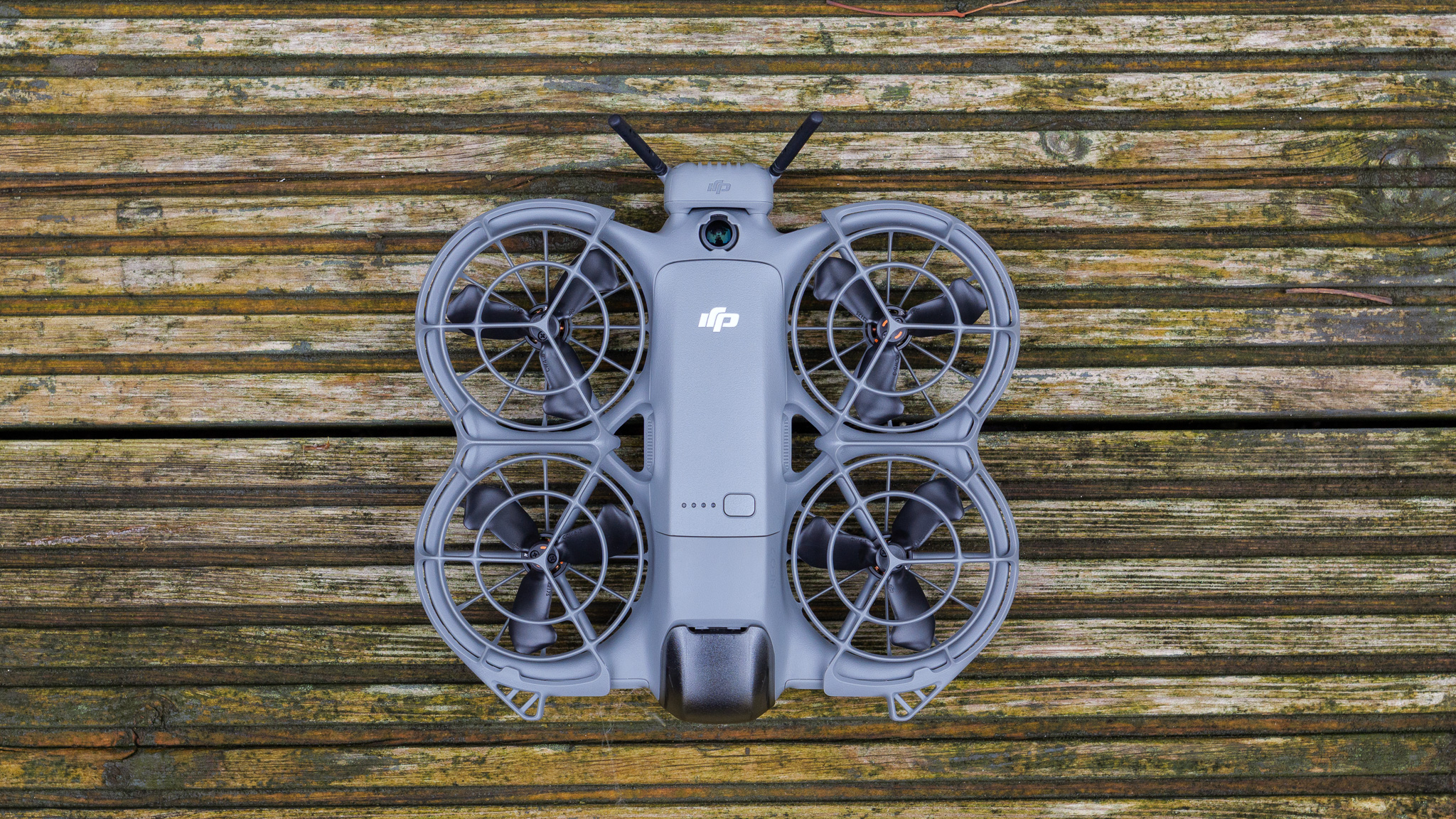
DJI Neo 2: specs
Camera: | 12MP 1/2-inch CMOS sensor |
Video resolution: | 4K |
Frame rates: | 4K up to 60fps (100fps when using remote control) |
Video transmission range: | 04 for 10km (FCC), 6km (CE/SRRC/MIC) |
Flight modes: | Manual Control, Follow, Skiing Follow, Cycling Follow, SelfieShot, Dronie, Helix, Rocket, Circle, Boomerang, Dolly Zoom, Spotlight |
Storage: | 49GB on-board |
Battery: | 1606mAh / up to 19 minutes flight time. |
Charger type: | USB-C / Battery charging hub |
Weight: | 5.6oz / 160g (inc. transceiver) |
Dimensions: | 167 x 171 x 54mm (inc. transceiver) |
DJI Neo 2: design and handling
- Non-folding design with enclosed propellers
- 160g weight with Digital Transceiver fitted (151g without)
- 49GB of built-in storage
The overall look of the Neo 2 is similar to last year's original – this is a small, non-folding 'whoop'-style quadcopter with integrated propeller guards and a nose-mounted camera. But on closer inspection there are some key differences.
One major departure is an extra pod on the back, complete with rabbit-ear antennas. This is a Digital Transceiver, which comes pre-installed on certain versions of the drone and allows it to connect to DJI accessories like controllers and headsets. Without it, the Neo 2 can only be flown with a smartphone or completely controller-free.
For me, the most welcome change is the inclusion of a small display on the front, which indicates which flight mode the drone is in. It's a big improvement on the Neo's light-up icons, which I always found confusing. This display, along with the three buttons arranged along one side of the drone, makes controller-free flight much simpler this time around, and meant I didn't feel the need to pull out my phone and connect to the DJI Fly app so often.
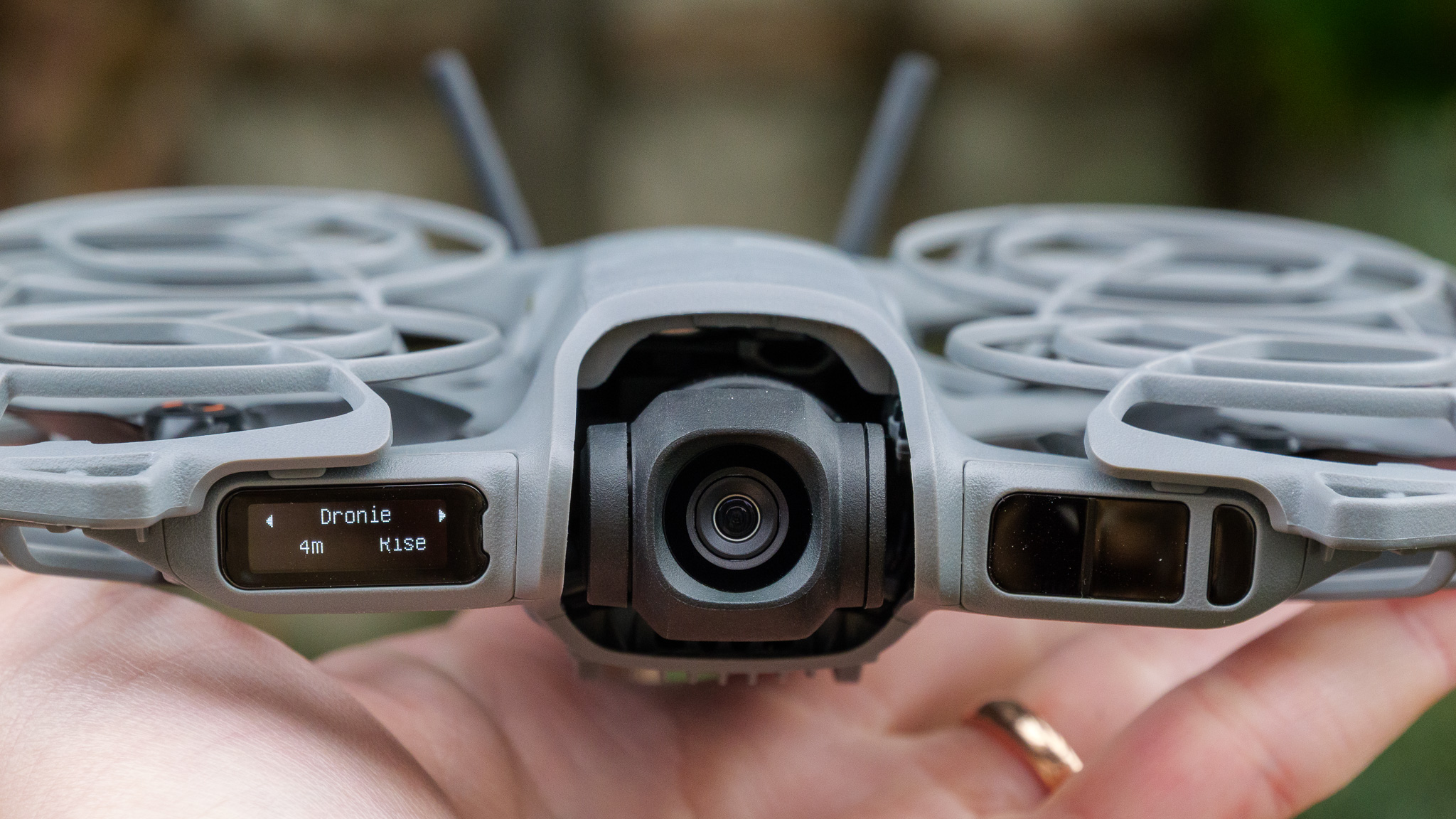
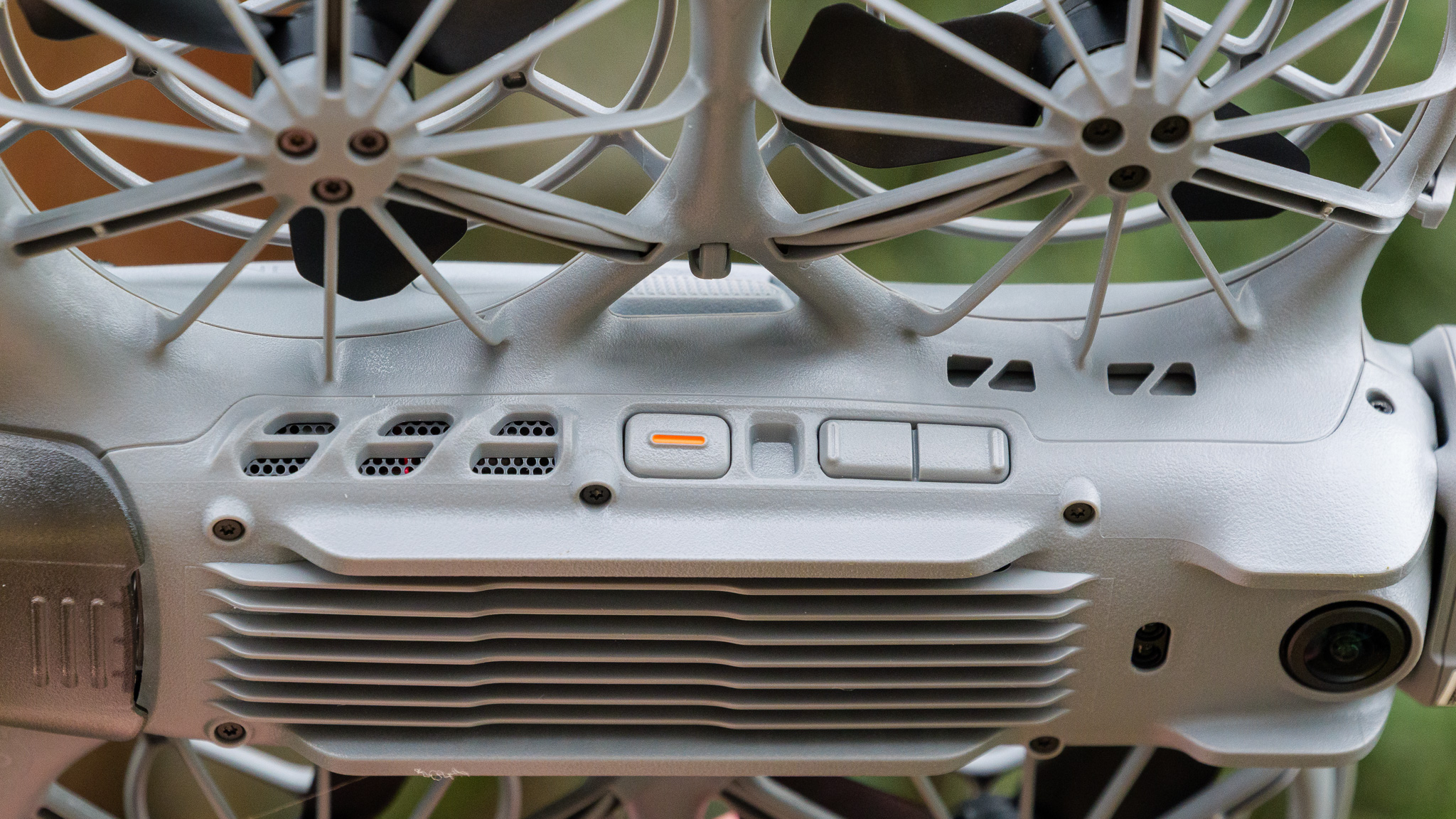
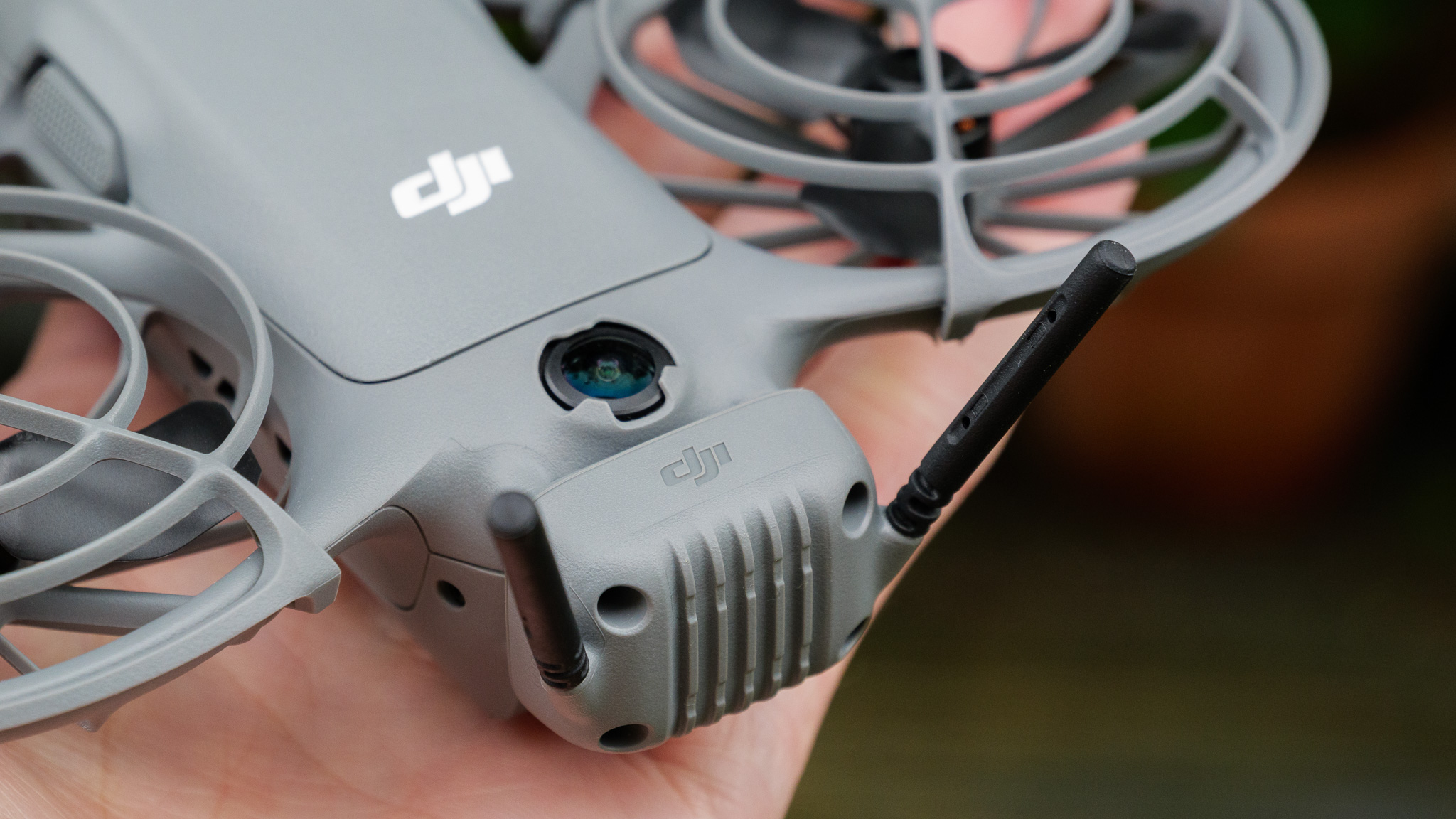

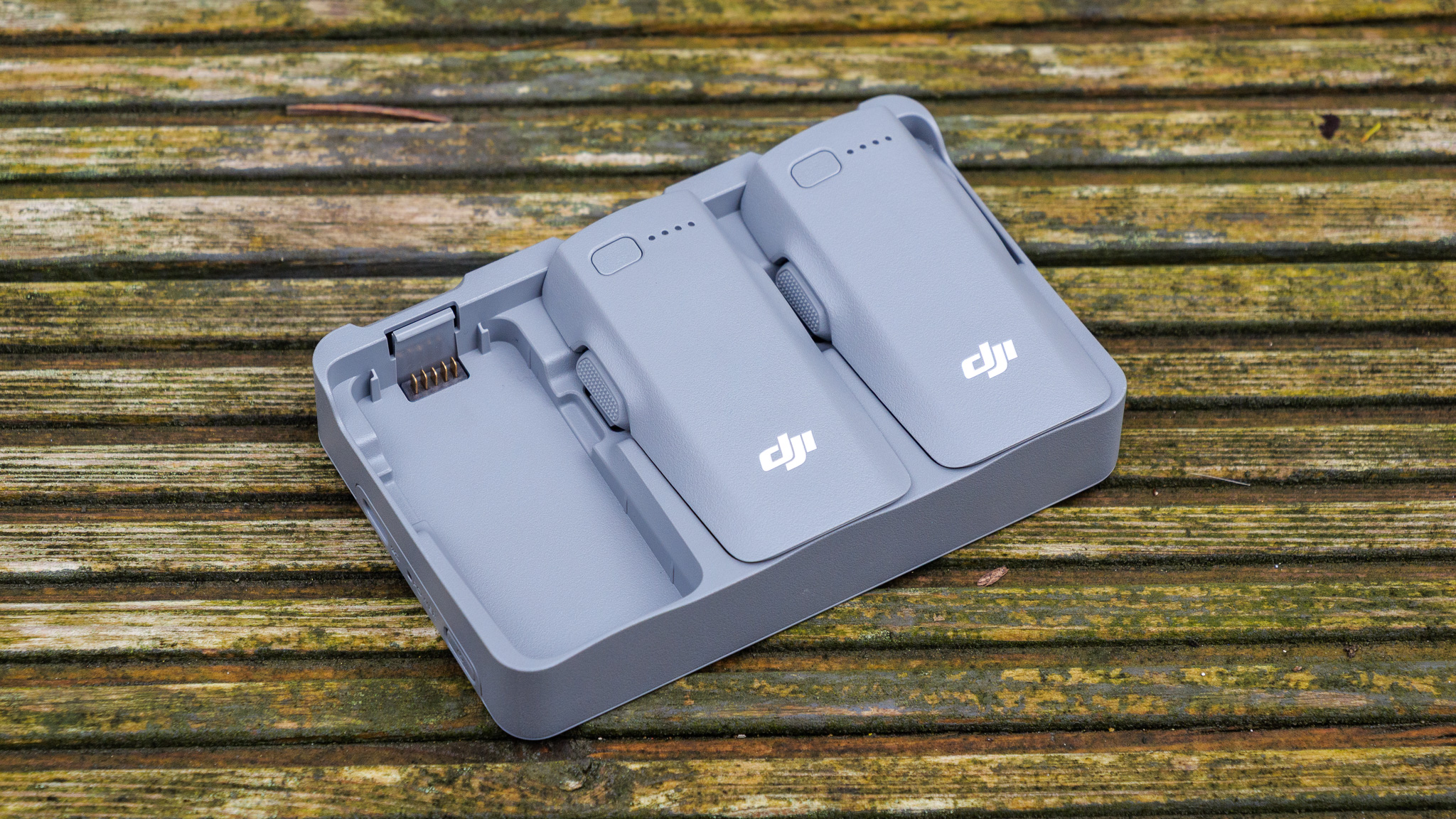
These changes haven't greatly affected the shape or weight of the drone compared to the original, and at around 160g with the transceiver or 151g without, it falls well under the key 250g threshold. In the EU, it's a Class 0 model, and with these classifications coming to the UK soon it means the Neo 2 can be flown in most locations, closer than 50m to uninvolved people and over people (but not over crowds).
The build quality is what you'd expect from a DJI drone: despite the lightweight plastic, it feels solid and well built. An included plastic cover fits on to protect the camera when it's not in use, and extra prop guards come pre-installed to protect both the propellers and the fingers of users from harm. These can be removed, should you need to replace the propellers.
I had no fears about tossing the Neo 2 into my backpack when travelling, although I was a little surprised that the Fly More Combo DJI sent me to review didn't come with some kind of carrying bag or case.
The Neo 2's batteries pop in and out easily, and can be charged either inside the drone or using the optional three-battery hub. The drone has its own USB-C port for both charging and data transfer, and like the original model there's no microSD card slot for storage expansion. The built-in storage has been upgraded though, from the Neo's 22GB to 49GB. That's enough for about 105 minutes of 4K 60fps footage or 175 minutes of 4K 30fps footage.
DJI Neo 2: features and performance
- Range of built-in flight modes and QuickShots
- Also compatible with DJI controllers
- 49GB of built-in storage space
The Neo 2 is first and foremost a selfie drone, designed for capturing quick shots of you and yours for your holiday album or social media. To that end, it comes with a range of built-in automated flight modes, plus QuickShots, which is designed to record a video or take a photo while flying in a preset and predictable manner. To see some of these in action, check out the video embedded in the next section of this review.
The Neo 2 also features pretty impressive tracking capabilities, allowing it to follow the user using just its camera, filming as it does so. It can do this while you're on foot, on a bike or even skiing, and having tested the first two methods I can say it's very adept at doing this.
You can set it to follow you at various angles and distances, and I found it easiest to set these using the DJI Fly app, connected to the Neo 2 via Wi-Fi. The drone's own screen and buttons can be used for this too, but it's just simpler and more reliable to do it using your phone in my experience.
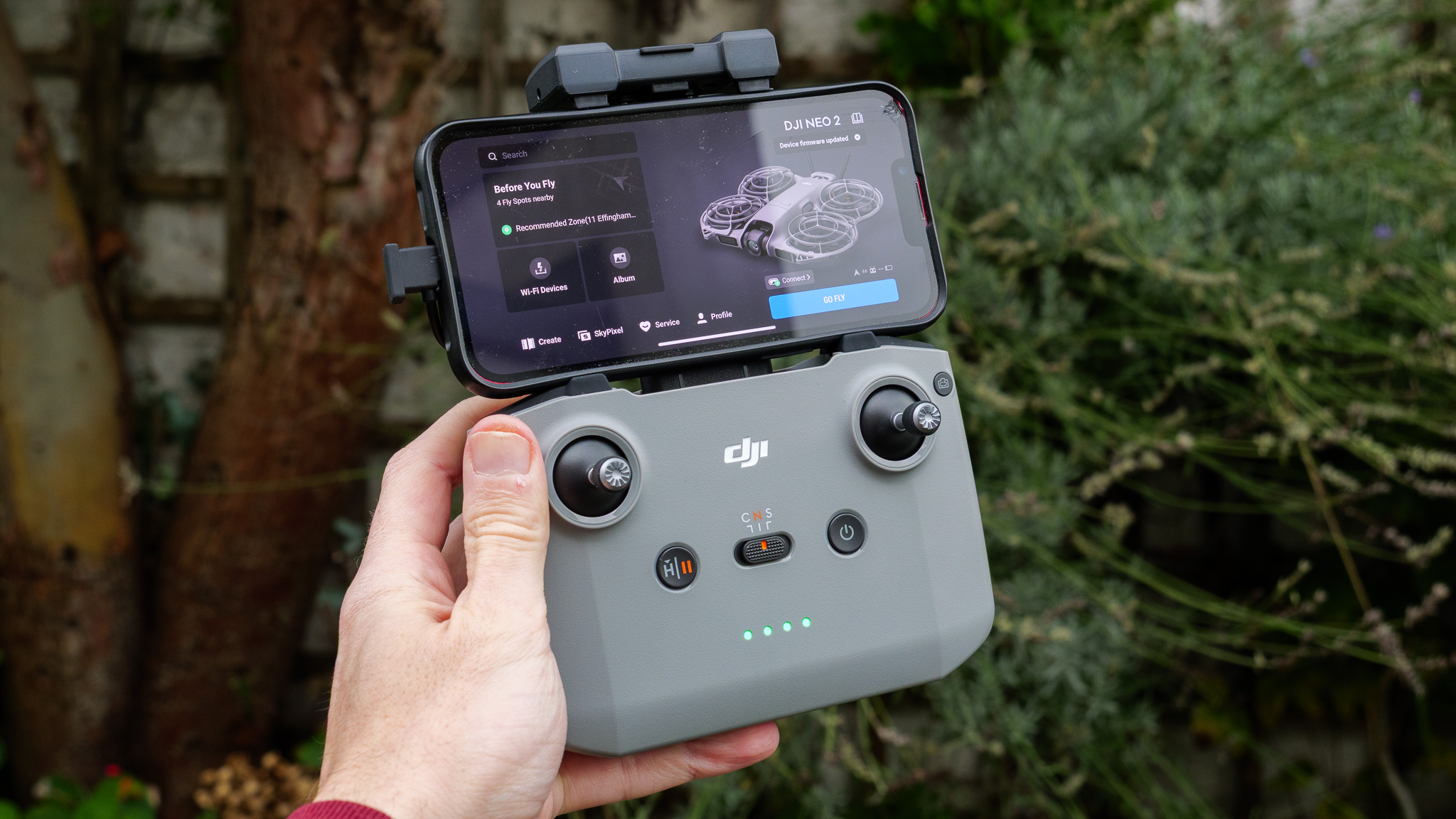
I also flew the Neo 2 using touchscreen controls and the DJI Fly app on a smartphone, and the RC-N3 controller. The app flight controls are quite rudimentary, but the drone responded well to them, and I think they're fine for getting it into a particular position for a photo or video.
With the controller, the flight experience becomes much more like a traditional DJI camera drone, and the drone flies nimbly and responsively here – albeit with less wind resistance and speed than a fully-fledged Mini, Air or Mavic drone.
As with the Neo, the Neo 2 is also suitable for FPV flying, if you have a set of compatible DJI Goggles and RC Motion Controller. I wasn't able to test this out personally, unfortunately.
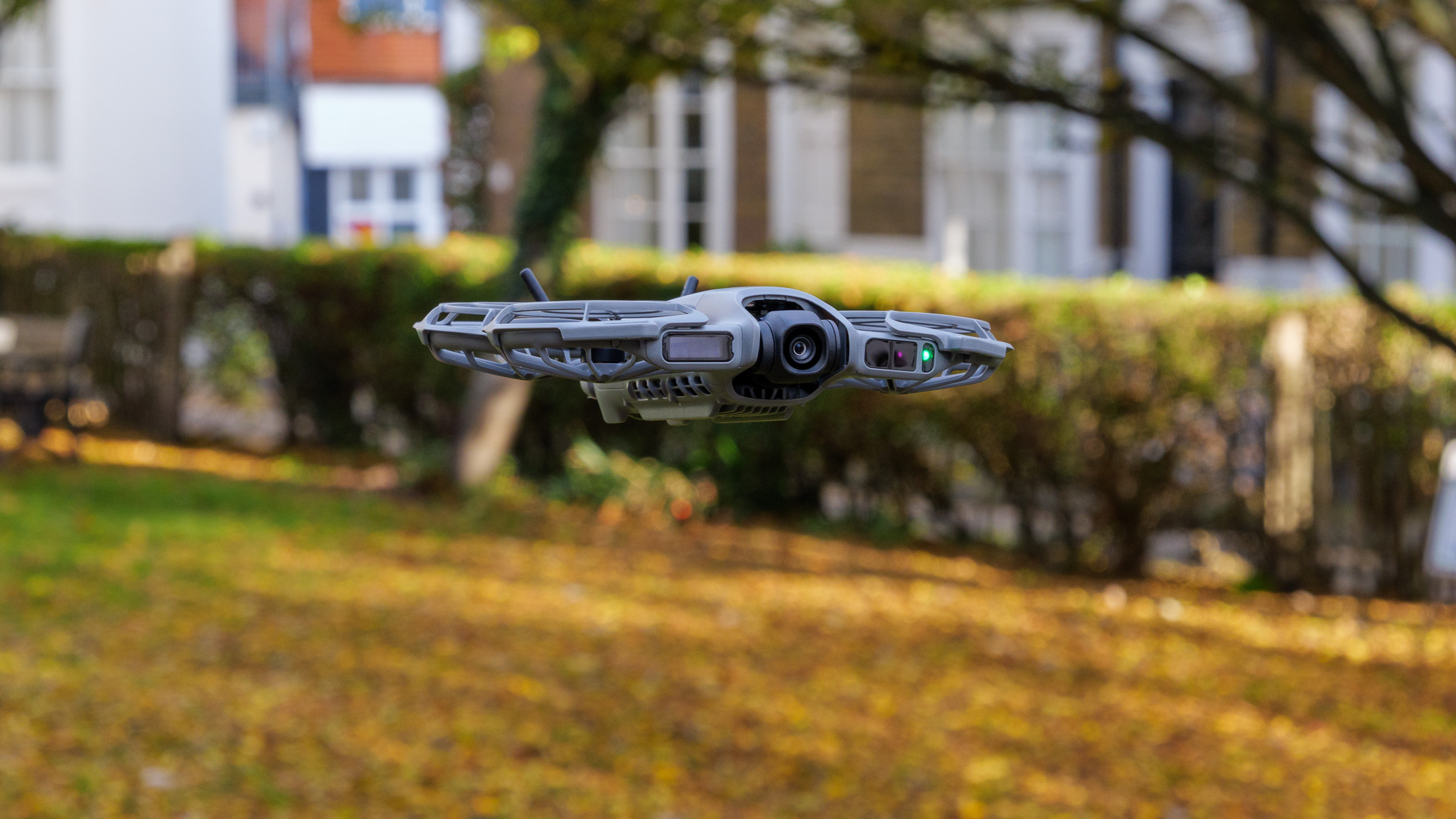
Perhaps the biggest flight upgrade on the Neo 2 is the addition of omnidirectional object sensing, which prevents the drone from crashing into trees, fences and the like during its automated flights. It even uses LiDAR for the forward-facing sensor.
Given that the original had essentially no object avoidance at all, it's a game-changer, and in my tests it worked well. For example, rather than flying into tree branches behind it, I noticed it dropped in altitude to get underneath them – impressive stuff from such a small, affordable drone.
Battery life is about the same as the original Neo: 18 or so minutes in ideal conditions. In real-world use, I found it to be closer to 10 minutes, so if you're planning on flying for extended periods then the Fly More Combo, with its extra batteries and charging cradle, feels like a sensible option.
DJI Neo 2: image and video quality
- 1/2-inch image sensor
- 4K video capture up to 100fps
- 12MP JPEG photography
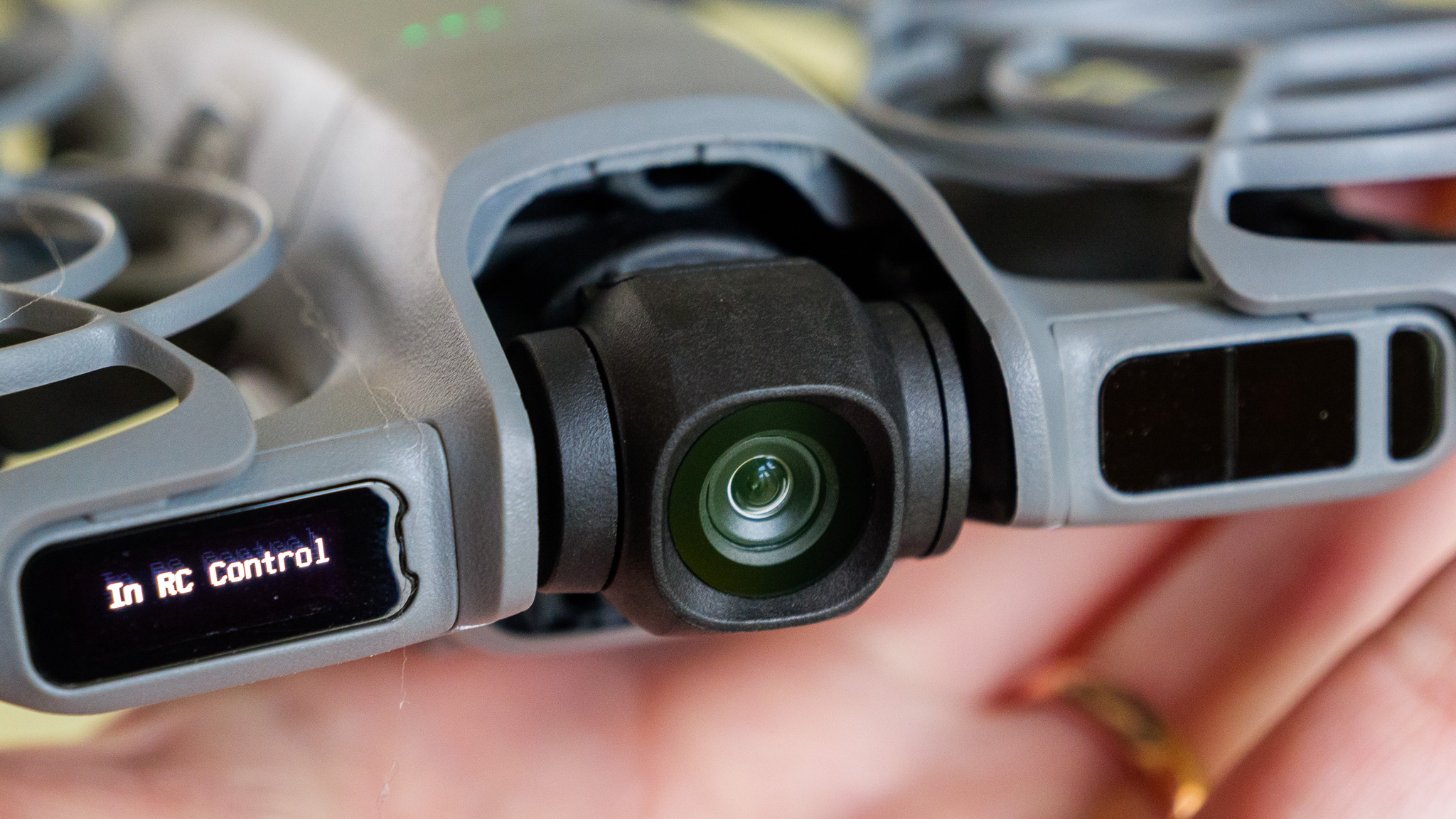
The Neo 2 offers a modest image quality upgrade, but uses what appears to be the same 12MP 1/2-inch sensor as its predecessor. The camera is now mounted on a new two-axis gimbal which, partnered with the RockSteady electronic image stabilization brought over from the original Neo, manages to keep the horizon level while shooting.
In higher winds, there's a little less stability to the camera than I'd expect from a full-blooded DJI camera drone – but then this isn't one of those, and it performs excellently for a drone in this price bracket.
The camera provides a 119.8-degree field of view, with a full-frame equivalent focal length of 16.5mm, which is wide without adding too much corner distortion. The aperture is fixed at f/2.2, making the camera slightly faster than the Neo's f/2.8 lens. ISO range has been improved too, and now runs from 100 to 12800 in most shooting modes.
The Neo 2 isn't a "serious" camera drone in the same way as many of its DJI stablemates, but can still manage 4K capture at up to 60fps (or 100fps when using a controller). I think the footage and 12MP photos look more than acceptable straight from the camera, but if you're expecting pro-level quality you're going to be disappointed. There are no options to shoot in anything other than the Standard color profile for video, and no RAW option for photos. There's no way to fit ND filters on the camera either.
If you can live with these limitations and take the Neo 2 for what it is, you should be more than happy with its camera performance. I know I was – for such a small and simple drone, it delivers results that are ideal for social media sharing.
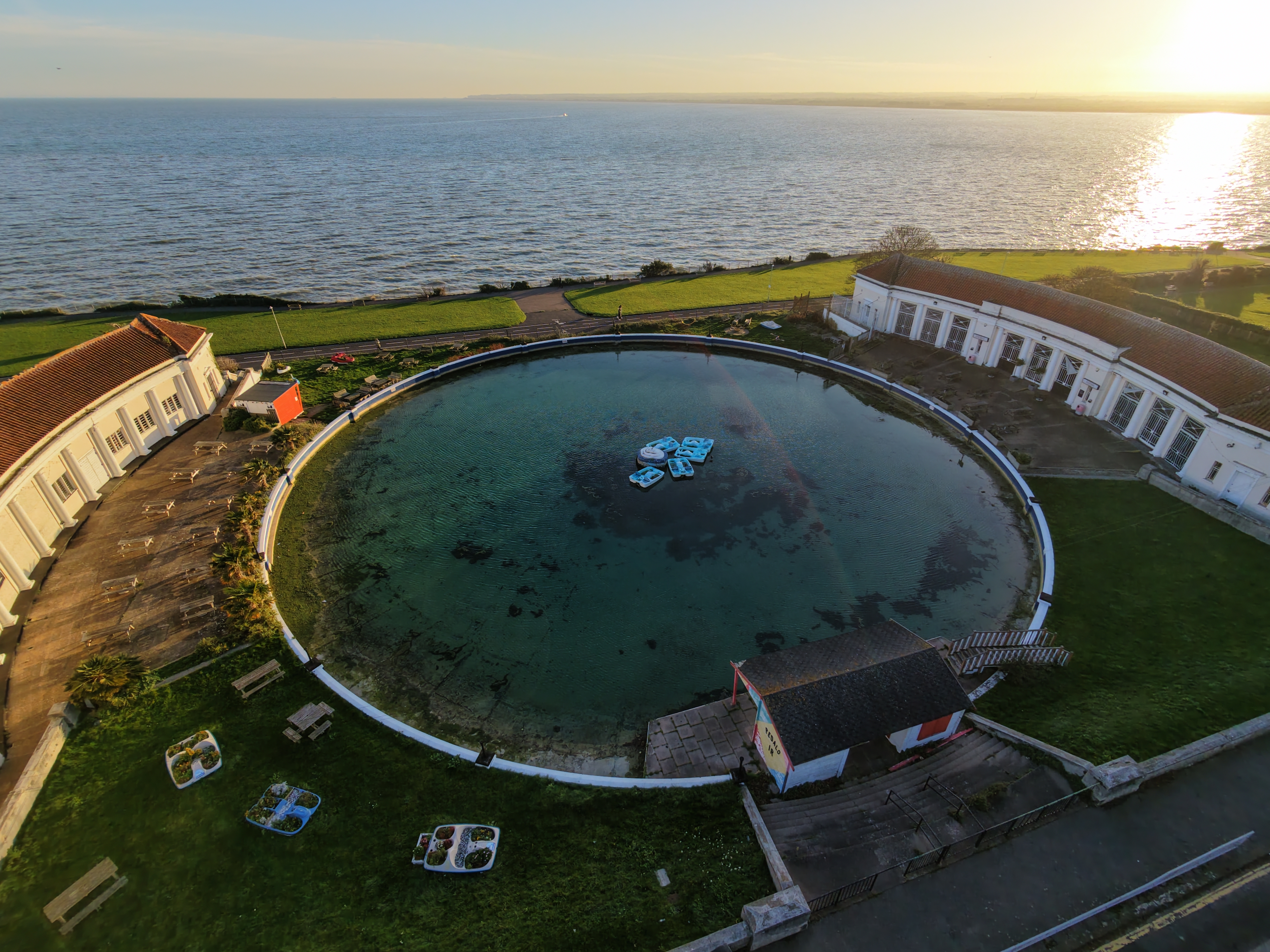
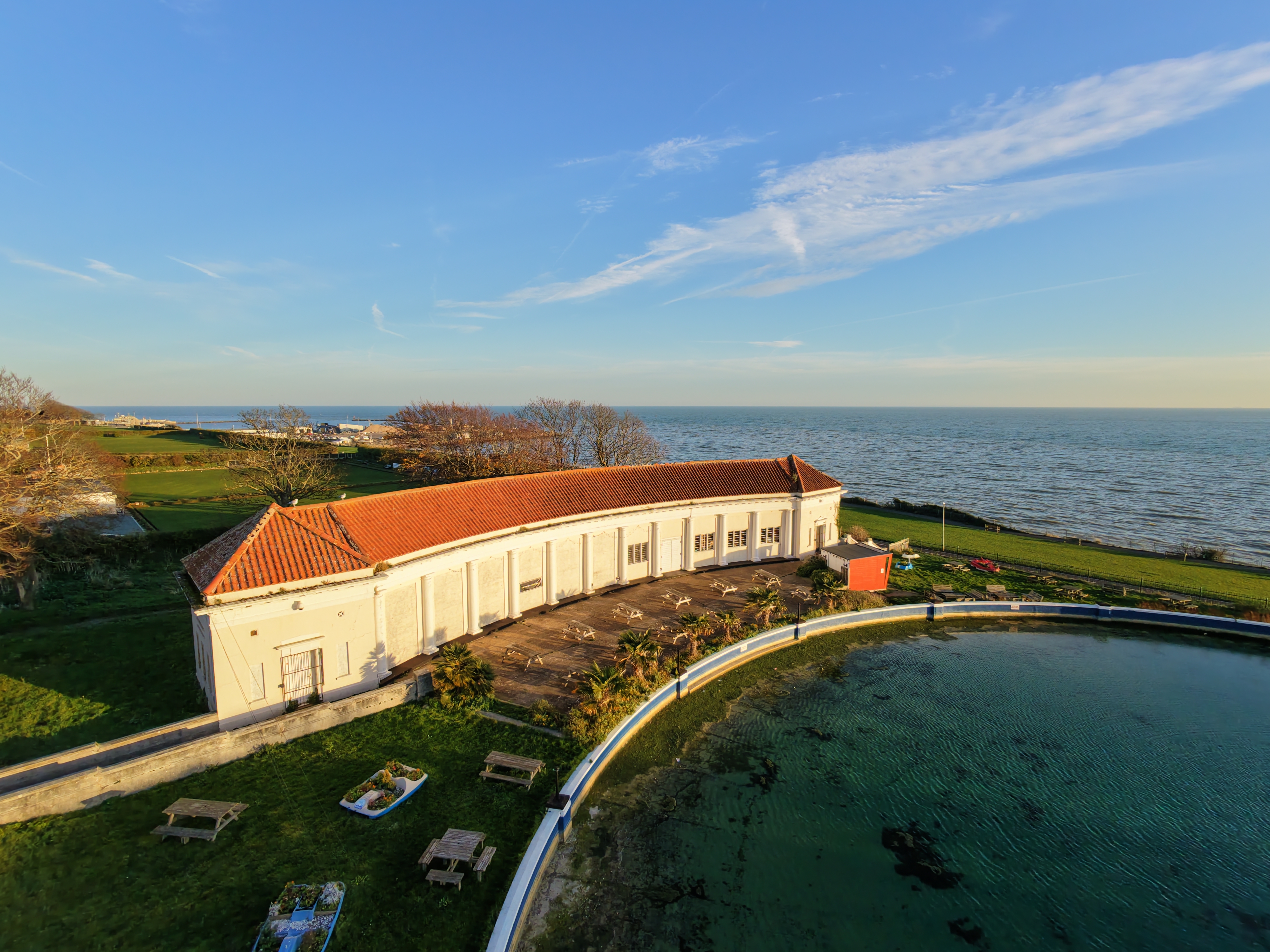
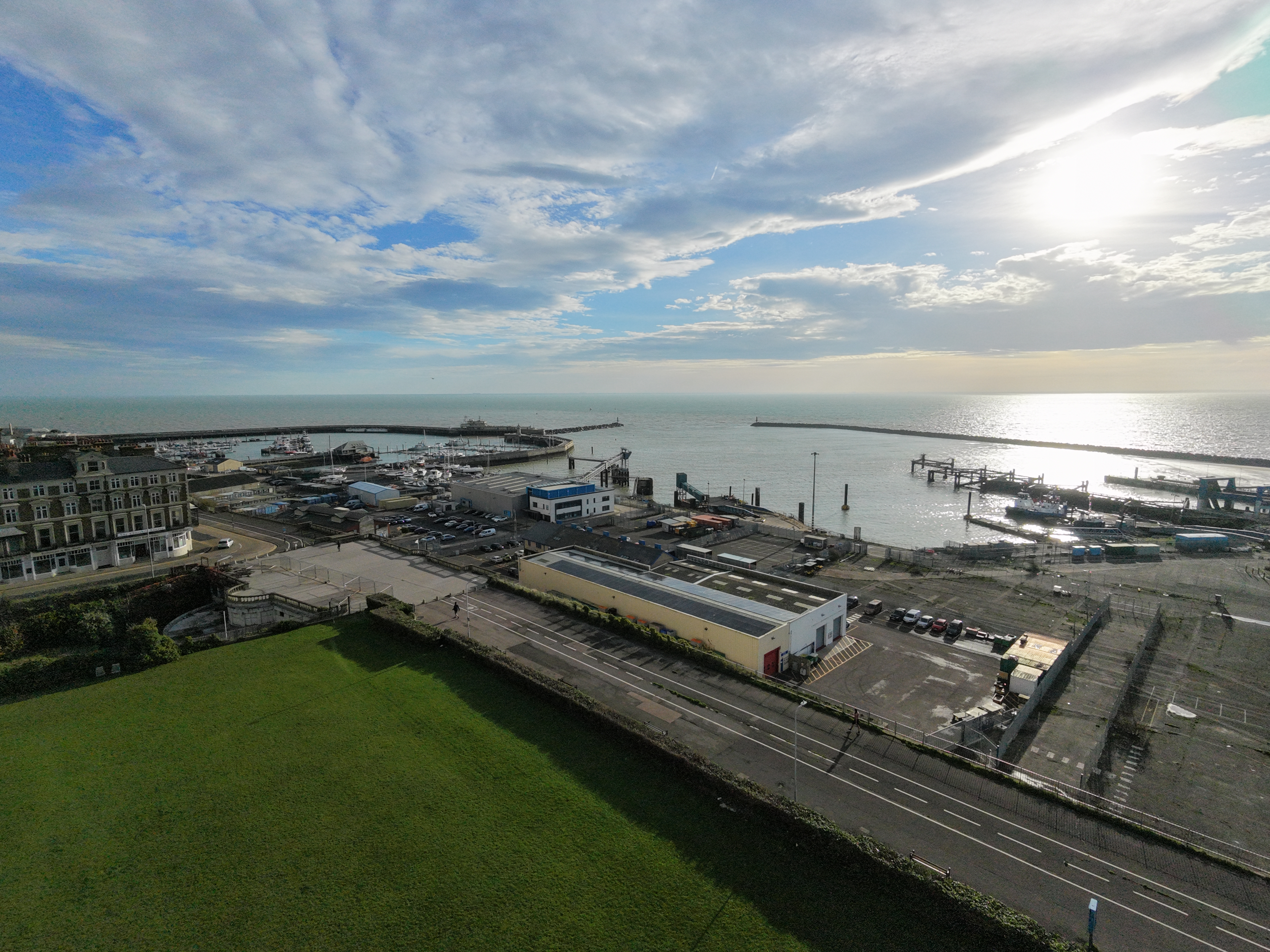

DJI Neo 2: testing scorecard
Attributes | Notes | Rating |
|---|---|---|
Price | Not quite as cheap as its predecessor, but still superb value | 5/5 |
Design | Small, lightweight and well constructed | 4/5 |
Performance | Lots of control options, now with obstacle avoidance | 5/5 |
Image and video quality | Simple stuff, but gets the job done | 4/5 |
Should I buy the DJI Neo 2?
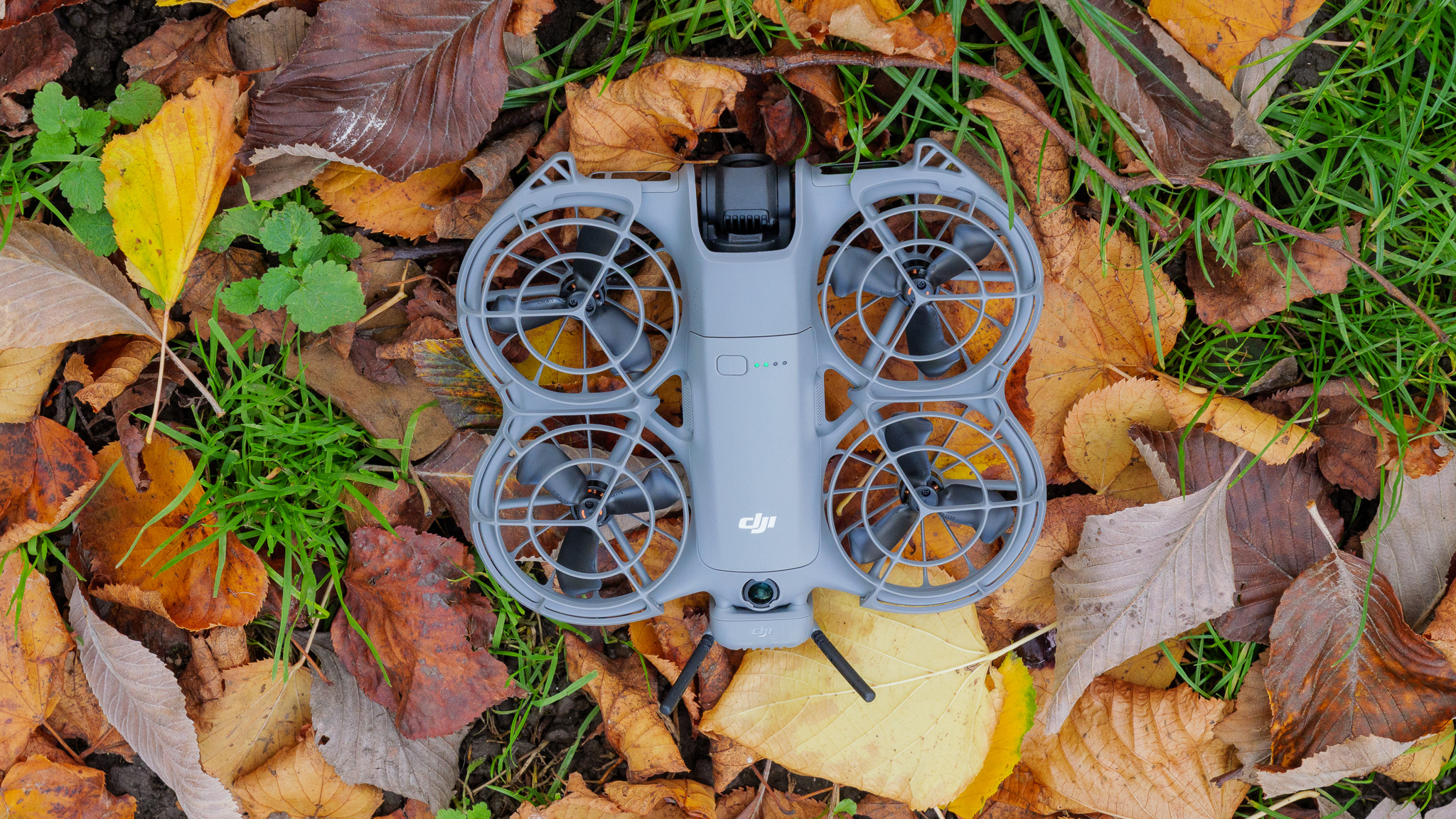
Buy it if...
You want a simple, small drone
With the option to fly controller-free, the Neo 2 keeps things beautifully simple – and its obstacle avoidance makes crashing much less likely than was the case with the original Neo.
You’re on a limited budget
The Neo 2 is affordable compared with some of DJI's more advanced drones, especially if you buy the base kit. It's a great way to get into drone flying.
You already own DJI FPV accessories
If you already own a DJI FPV controller (Motion 3 or FPV 3) and DJI Goggles N3 or 3, the Neo 2 gives you a lightweight, restriction-free alternative to the Avata.
Don't buy it if...
You want advanced photo and video capabilities
The Neo 2 is designed with capturing quick shots and clips in mind. Despite its 4K resolution it's not a 'serious' camera drone – you'll need to move further up DJI's range for those.
You want a 'real' FPV drone
While FPV flight is possible by adding a headset and controller, the prohibitive combined cost means you're better off buying a DJI Avata 2 instead. It's better suited to the job too.
DJI Neo 2: also consider
If you're more interested in image quality than simplicity and affordability, but still want something small, I don't think there's a better 250g-ish drone than the DJI Mini 5 Pro. Its 1-inch sensor delivers incredible videos and photos, and it's a brilliantly easy drone to fly thanks to a raft of safety features.
Read our in-depth DJI Mini 5 Pro review
The HoverAir X1 Pro is perhaps a better overall selfie drone than the DJI Neo 2, thanks to its incredible tracking capabilities and clever folding (and highly pocketable) design. However, it's a lot pricier, and in my opinion that makes it a bit less appealing than the cheap and cheerful Neo 2.
Read our in-depth HoverAir X1 Pro review
How I tested the DJI Neo 2
- All main features and functions tested
- Flown with the DJI RC-N3 Controller, direct app control and without app
- Flown outside in dry but breezy conditions
I tested the DJI Neo 2 outdoors during the autumn of 2025 in the UK, in dry but fairly blustery weather conditions. The aim was to test all the functions, features and flight modes of the drone in real-world situations, in order to properly assess its capabilities and limitations.
Of the control options available on the drone I tested voice control, palm take-off without the use of the DJI Fly app, app control, and the DJI RC-N3 Controller. I was not able to test its FPV abilities, lacking the necessary gear to do so.
First reviewed November 2025

Sam has been writing about tech and digital culture for over 20 years, starting off in video games journalism before branching out into the wonderful worlds of consumer electronics, streaming entertainment and photography. Over the years he has written for Wired, Stuff, GQ, T3, Trusted Reviews and PC Zone, and now lives on the Kent coast in the UK – the ideal place for a camera reviewer to ply their trade.
You must confirm your public display name before commenting
Please logout and then login again, you will then be prompted to enter your display name.
